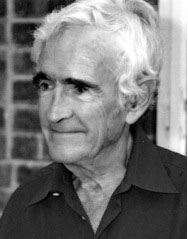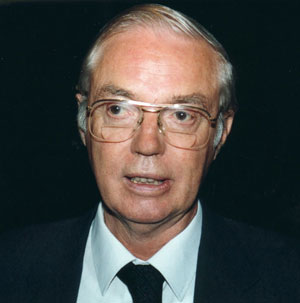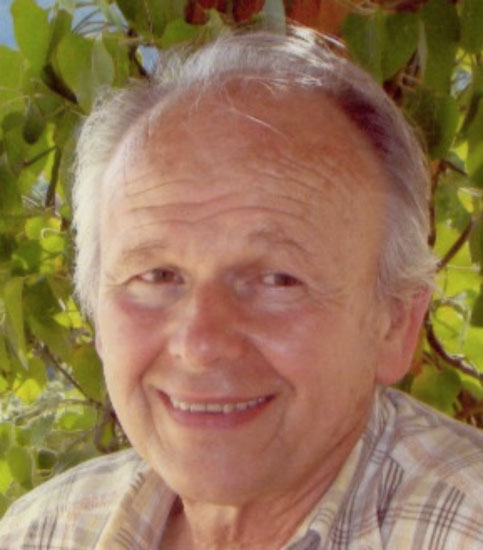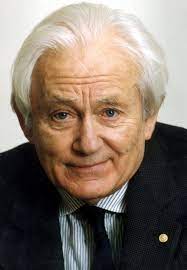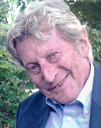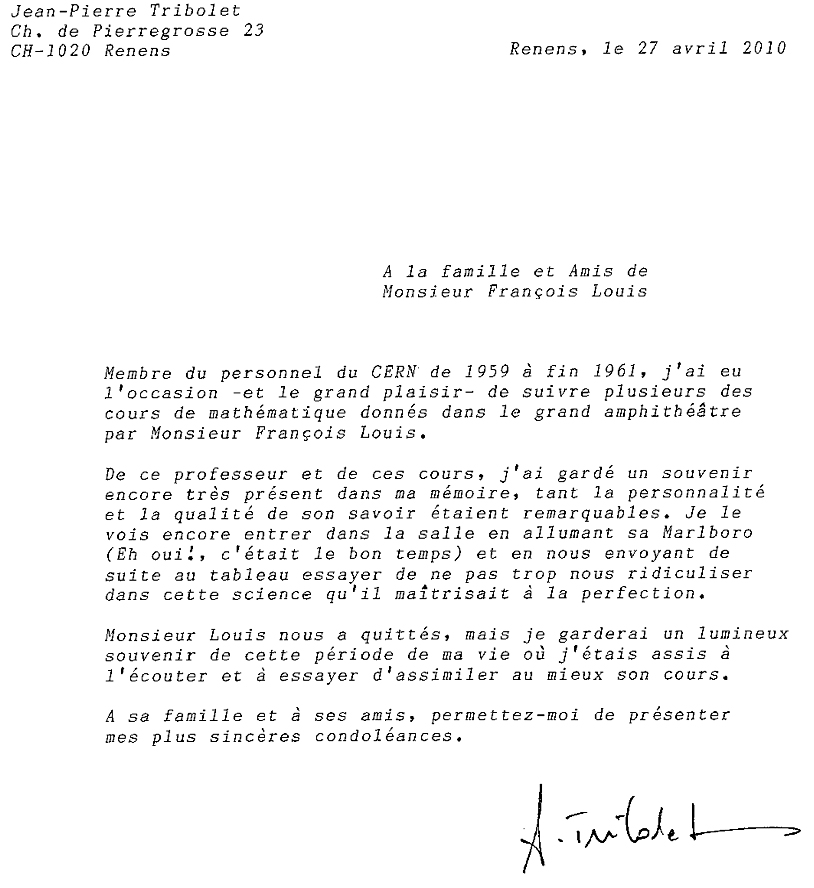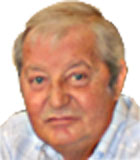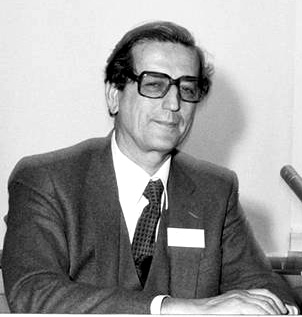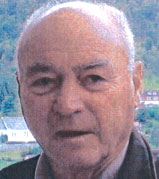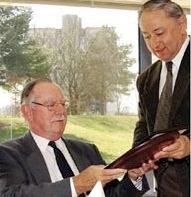Following a long and cruel illness, which he and his family bore with great fortitude, Owen Lock died on 19th March 2010.
Owen was born on 8th August 1927 and grew up in Cirencester, England, where he attended Grammar School. In 1945, he won a State Scholarship to study physics at the University of Bristol, where he graduated in 1948 with a First Class Honours B.Sc. degree. Immediately after the Nobel Prize-winning discovery of the pi-meson by Cecil Powell and his colleagues, Owen joined that international group, working with the newly-developed technique of photographic nuclear emulsions, that were exposed to cosmic rays in high-altitude balloon flights. His numerous papers from that time include observations of the production and decays of mu-, pi- and K-mesons and their interactions with nuclei. He wrote a review article in Progress in Cosmic Ray Physics in 1951 and obtained his Ph.D. in 1952. By then he had been, successively, secretary and chairman of the Bristol branch of the Association of Scientific Workers and had joined the World Federation of Scientific Workers and the British Pugwash Movement.
He met his wife, Eleanor, in Bristol. They were married in 1952 and moved to Manchester, where Owen took up a Research Fellowship. He worked there with Patrick Blackett on further investigation of the K-mesons, discovered by Rochester and Butler in 1946-1947. They stayed five months in Manchester, before Owen took up a lectureship at the University of Birmingham in 1953. In addition to lecturing in the Physics and Extra-mural Departments, he formed a group to expose nuclear emulsions to beams at the newly-constructed 1 GeV proton-cyclotron. There followed a rich series of papers on proton interactions with matter and the nuclear disintegrations they provoke. Whilst in Birmingham he wrote a book: High Energy Nuclear Physics, which was subsequently translated into Russian, French and Polish.
Having savoured the rich, international atmosphere in Powell’s group in Bristol, Owen was attracted by CERN. He applied and was awarded a Research Associateship in 1959, which led to a staff appointment in 1960, when he took over the joint leadership of the Nuclear Emulsion Group in NP Division. Here he was responsible for organizing the exposure of emulsions to beams from the Proton-Synchrotron (which started in November, 1959), in conjunction with groups from institutes all over Europe and beyond. He became, in turn, PS Physics Coordinator, Secretary of the Emulsion Experiments Committee and of the Nuclear Physics Research Committee. He initiated and organized the first Easter School for emulsion physicists, held in St. Cergue in 1962 and repeated in 1963. This became the CERN School of Physics, held each year in a different CERN member state. He was subsequently responsible for the School becoming a joint venture with JINR, Dubna, USSR, which, starting in 1970, was hosted alternately in the eastern and western parts of Europe.
The breadth of his human contacts and his rare organizational talent led Owen, in 1965, to transfer to Personnel Division to become Head of the Fellows and Visitors Service. As early as 1962, he had started organizing conferences and, in 1966, became Head of the Scientific Conference Secretariat and secretary to a working group, chaired by Bernard Gregory, on ESRO (later ESA). In 1968, he was appointed acting Division Leader and, in 1970, Head of Education Services and Deputy to the PE Division Leader until 1977.
That year he became Personal Assistant to John Adams (co-DG with Léon van Hove), and Secretary of the Board of Directors and of the Management Board. He guaranteed continuity, as he also fulfilled these roles under two subsequent DGs, Herwig Schopper and Carlo Rubbia. As early as 1965 he had accompanied Bernard Gregory to Moscow to negotiate an agreement with the State Committee for Atomic Energy on collaboration between the new accelerator institute, IHEP (Protvino) and CERN. First contacts with China followed under Willibald Jentschke in 1971, which resulted in a visit by a Chinese delegation to CERN in 1973 and return visits in 1975 and 1977. These contacts led to cooperation agreements with China, signed during visits in 1979 by John Adams and in 1981 and 1985 by Herwig Schopper, where Owen was the link-person. In 1976, the International Council of Scientific Unions founded what, in 1978, became the International Committee for Future Accelerators, ICFA, with John Adams as chairman and Owen as secretary. Under Carlo Rubbia, Owen became responsible for relations with Central and Eastern Europe, in addition to his ongoing contacts with China and India, which continued until his retirement in 1992. He was largely responsible for five countries acceding to full membership of CERN: Finland, Poland, Hungary, the Czech Republic and Slovakia.
Owen was a highly-educated and widely-read, yet modest person, who, complementing his outstanding contributions to physics and scientific cooperation, possessed deep convictions that led him to weld human contacts and friendships, encompassing people throughout the world. To his family and to those of us who have experienced his generosity and had the privilege of being guided by him, an era has ended and we feel the loss. Our sympathy goes to his wife, Eleanor, and his four sons, Nicholas, Adrian, Evan and Eric.
His close friends

